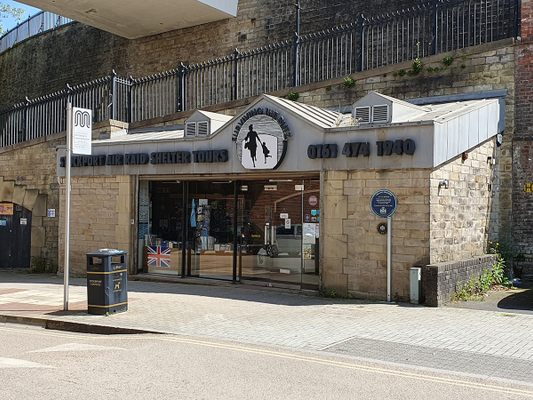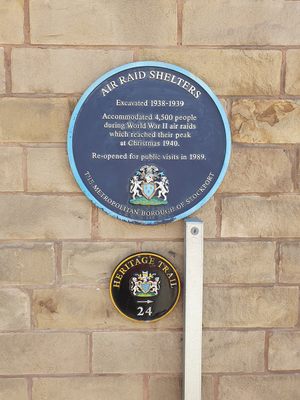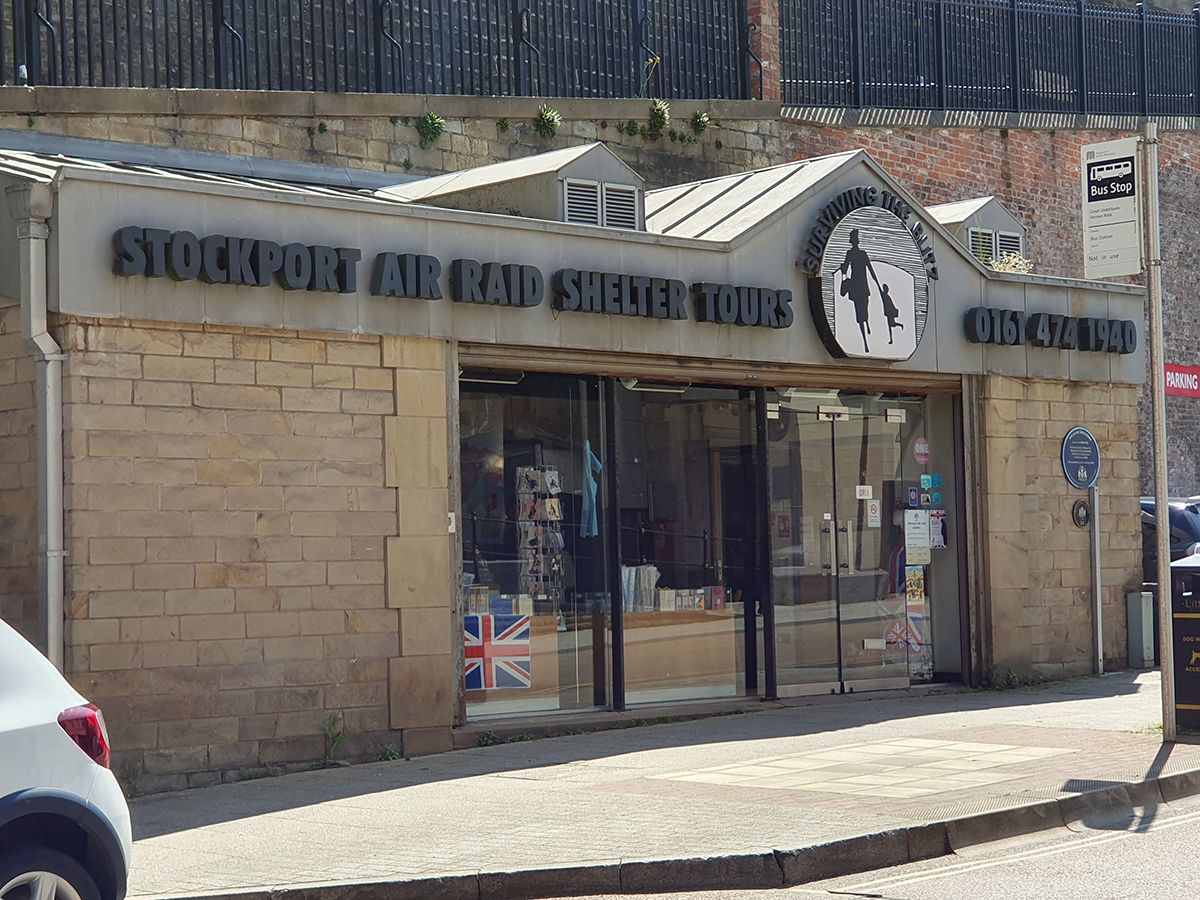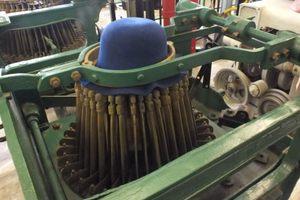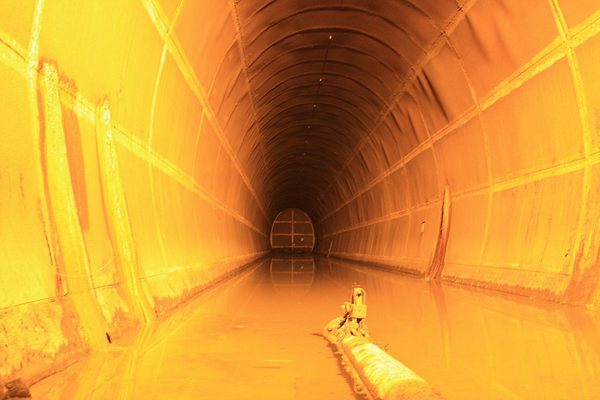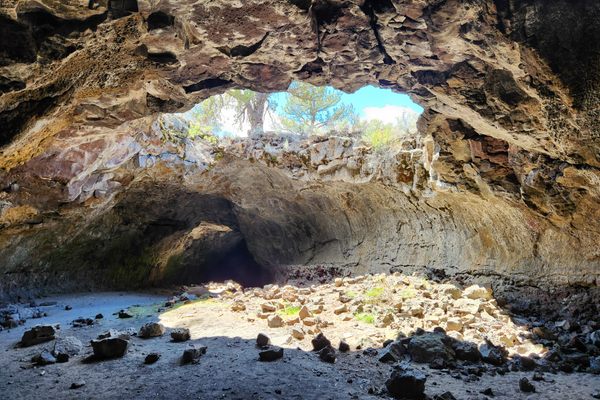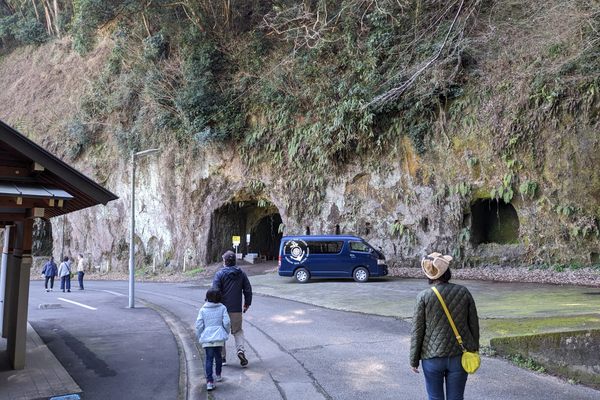About
Leading up to World War II, many cities and towns across the United Kingdom prepared air raid shelters to protect their citizens in case of attacks by the German Luftwaffe. This included the town of Stockport, which is located in northwest England, just south of Manchester. The Stockport air raid shelters were carved directly into the sandstone cliffs surrounding the industrial town, making them one of the most notable World War II purpose-built public air raid shelters still in existence in the United Kingdom.
Located near the headwaters of the Mersey River, Stockport developed around a series of red sandstone hills. Before World War II, a series of old cellars and mines had been discovered in the hills during road improvement works, so in preparation for the war, the city decided to expand these pre-existing tunnels. The sandstone was relatively soft, making the work of making the shelters relatively easy.
When the shelters opened in 1939, they were the largest purpose-built civilian air raid shelters in the United Kingdom. Originally, the shelters had a capacity of 3,850 people, but they were soon extended so that they could hold up to 6,500 people. Stretching nearly a mile underground, the tunnels were fitted with electric lighting, benches, bunk beds, a first aid post, a sick bay, a warden’s post, accommodations for nursing mothers, and flushing toilets. The shelter was nicknamed the "Chestergate Hotel" because it was located on a street named Chestergate and because the accommodations were considered quite luxurious for an air raid shelter.
After the war, the shelters were boarded up and soon forgotten, only to be rediscovered decades later. While some of the furnishings as well as the lighting had disintegrated, some of the other metal furniture as well as the toilets were in good condition. The shelters were opened up to public tours in 1989, and then the local council decided to convert the tunnels into a museum, which opened in 1996. The museum has continued to operate ever since, telling the story of how the people of Stockport coped during World War II.
Related Tags
Know Before You Go
The Stockport Air Raid Shelters Museum is located in central Stockport, so it is easily accessible by car and public transport. The museum is open Tuesdays through Sundays, but is closed during Mondays and bank holidays. Although the museum charges for tickets, seniors and students get discounts, and accompanied children can enter for free. Note that other tunnels are located on Brinksway (west of the town center) and Dodge Hill (on the far side of the river). These tunnels remain sealed and are not open to visitors, but their entrances are still visible from the street.
Community Contributors
Added By
Published
November 21, 2023
Sources
- https://hidden-manchester.org.uk/shelters/stockport-air-raid-shelters.html#:~:text=%3E%20Stockport%20Air%20Raid%20Shelters%20%F0%9F%93%8D&text=One%20set%20of%20shelters%20(nicknamed,occasional%20visit%20from%20Urban%20Explorers.
- https://www.heritagegateway.org.uk/Gateway/Results_Single.aspx?uid=1490967&resourceID=19191
- https://www.subbrit.org.uk/sites/stockport-air-raid-shelters-chestergate/
- https://www.stockport.gov.uk/topic/air-raid-shelters
